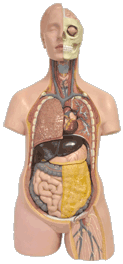At WiseGEEK, we're committed to delivering accurate, trustworthy information. Our expert-authored content is rigorously fact-checked and sourced from credible authorities. Discover how we uphold the highest standards in providing you with reliable knowledge.
What Is a Prokaryotic Ribosome?
Scientists divide cellular life into two major groups, prokaryotes and eukaryotes. Eukaryotes tend to be more complex organisms than prokaryotes, which are bacteria and a similar group called archaea. Ribosomes are present in all cells, and are part of the machinery that assembles proteins inside the cell from the genetic blueprint of the cell. A prokaryotic ribosome is a ribosome that works within a bacterial or archaeal cell.
Prokaryotes and eukaryotes have different structures to their cells and have different ways of running the cell. Although all kinds of cells have genetic material inside them, which tells the cell how to make proteins, and ribosomes, which make the proteins, the manner in which the cell does this depends on whether the cell is prokaryotic or eukaryotic. The prokaryotic ribosome is made up of two subunits, which are called 50S and 30S.

The numbers associated with the subunits depends on the rate at which they settle to the bottom of a centrifuge tube. "S" stands for Svedberg units, which is the method of measurement of this rate of sedimentation. Each subunit contains both ribonucleic acid (RNA) molecules and protein molecules. The 30S subunit contains a 16S ribonucleic acid and 21 different proteins. The 50S subunit contains a 5S RNA, a 23S RNA and more than 30 proteins.
All of these molecules band together to form a single prokaryotic ribosome. One bacterial cell, for example, contains thousands of ribosomes, some of which are free in the cell, and some of which are stuck onto a cell structure called the endoplasmic reticulum. It is not just the components of a prokaryotic ribosome that is necessary for its function but the shape of the ribosome. It has grooves and gaps that allow it to fit onto the building blocks of proteins and the genetic material that is the instructional strand for the protein.
A cell's genome contains the instructions for all the proteins the cell needs to function properly. However, the cell only makes proteins when copies of the gene for that protein are made, from the master copy instructions. These copies are messenger ribonucleic acids (mRNA), and ribosomes recognize these, rather than the master copy.
Ribosomes stick onto the mRNA, and other forms of RNA, called transfer RNAs, collect the necessary building blocks from the cell to make up the required protein and bring them to the ribosomes. These building blocks are amino acids, and once the ribosomes stick the amino acids together in a long string according to the mRNA instructions, they let the protein go into the cell. Prokaryotic ribosomes are very quick at their jobs, and can stick together as many as 20 amino acids per second.
AS FEATURED ON:
AS FEATURED ON:










Discuss this Article
Post your comments